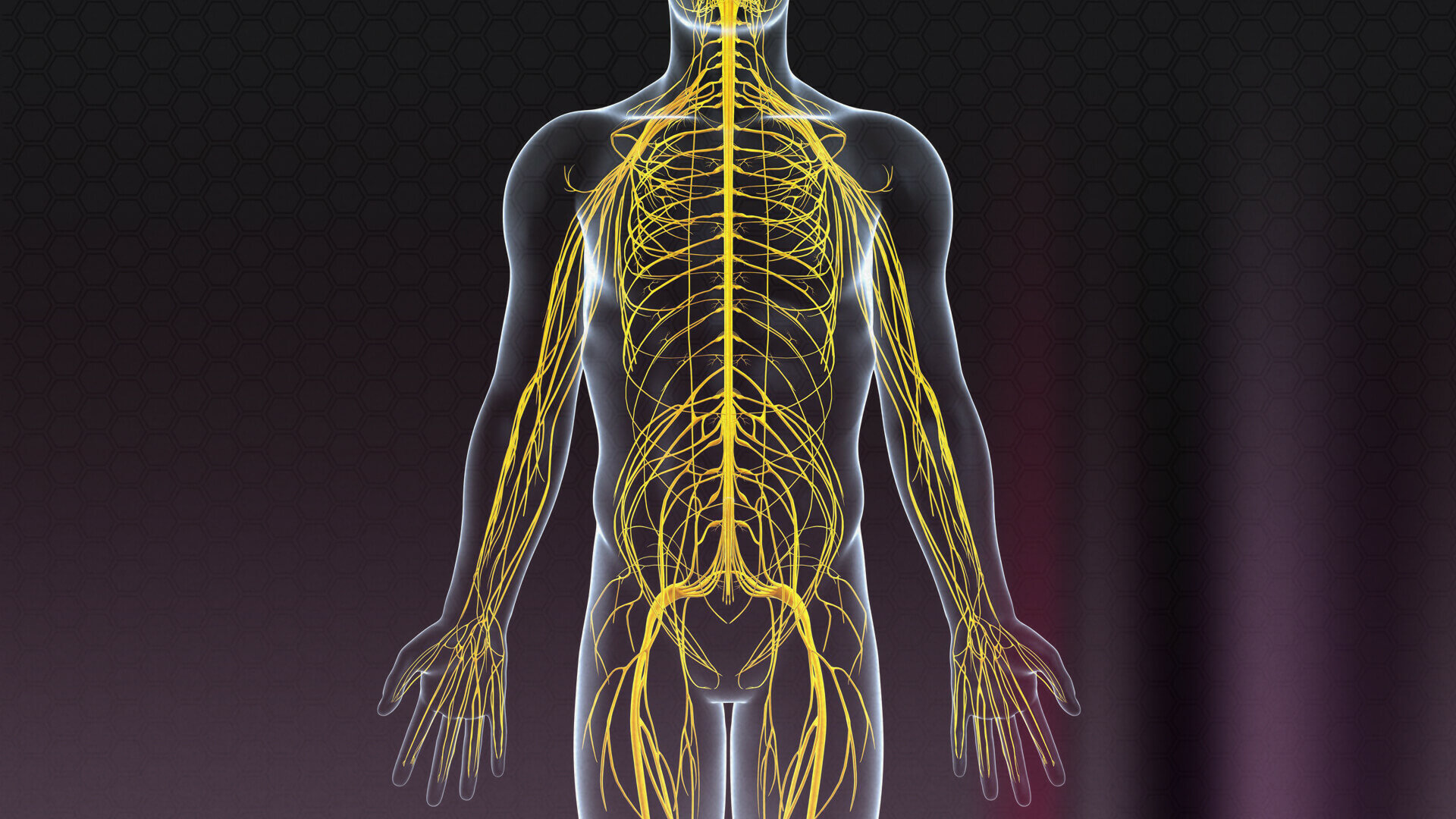Your nervous system is responsible for two things. It either inhibits or allows conscious or unconscious motions and sensations. [1] A simple analogy would be to liken it to a governor. Not a governor as in the leader of a state, but one that you would find on a car engine.
In the car engine, the governor prohibits the car from reaching max speed, by limiting how much gas you can actually pump into the car. If you’ve driven a car with a governor, you can feel the pedal stop short of how far it can actually go.
Within our bodies, we have a similar mechanism of governance. These governors are what we call the Golgi Tendon Organ (GTO) and the Muscle Spindle (MS). The MS and GTO both work as inhibitors to tell your nervous system to put the brakes on a given motion. The MS is defined as
…a proprioceptor. A sense organ that receives information from muscle, that senses STRETCH and the SPEED of the stretch. When you stretch and feel the message that you are at the ENDPOINT of your stretch the spindle is sending a reflex arc signal to your spinal column telling you not to stretch any further. This sense organ protects you from overstretching or stretching too fast and hurting yourself. [2]
And the GTO:
…a proprioceptor, sense organ that receives information from the tendon, that senses TENSION. When you lift weights, the golgi tendon organ is the sense organ that tells you how much tension the muscle is exerting. If there is too much muscle tension the golgi tendon organ will inhibit the muscle from creating any force (via a reflex arc), thus protecting the you from injuring itself. [3]
Listening to your body
On a gross level, we know how to listen to our body. If we get sick with bronchitis we know doing a balls to the wall HIIT session will likely have an ill effect on us for a day or two after. If we even get through the session at all. We can also tell during our warm-up sets if our deadlifts are going to be smooth sailing or turbulent.
Even more simplistic, if we have the desire for food, we know to eat. Tired? Sleep. And so on. But with our training ,it gets more nuanced. We have to use a finer approach. Moreover, depending on your goals, the cues you ignore and the cues you follow becomes something of a delicate balancing act to propel you to a better standing in your sport while preserving your tissue at all costs. If you plan on reaching an elite level, though, there will be injuries and setbacks. But if we work with ourselves and not against ourselves, we can go longer and harder and keep some setbacks at bay.
So for what are we supposed to listen? The elements of effort, of course. [4] They are as follows:
- Speed
- Position
- Tension
- Failure
- Pain
- Damage
- Death
Death might seem to be a bit of an overstatement, but it is possible to push your limits that far. A football player at the University of South Florida died during a workout in 2007. He had a rare congenital heart disorder which was not taken into account during his workout with the football team.
As for the other elements, let’s talk about them.
Speed
If you are performing a set of deadlifts at a given speed, and you get to the sixth rep in your set, and you slow down, your speed has decreased. The muscle spindle is in action here. It’s telling you that you need to chill out so you don’t hurt yourself. The governance in play is slowing you down and telling you not to stretch any further or any faster. So when your rep speed slows down, you are getting a less quality movement compared to the first five reps. This is a good indicator to take a break from your set, or maybe even move on.
Louie Simmons of Westside Barbell has his lifters train speed often. In the Westside system, the faster you can move an object the better and heavier you will lift. What we don’t often think about is that rep speed is another indicator of intensity. Ergo, the faster you get, the more progressive overload you can have over a given time period. So pay attention to your rep speed.
Position
Position is your form. When you lift, your body is in a certain position at all times. When you deadlift, your brace your abs, your grip is staggered (or hooked, or overhand depending on your preference). When your speed starts to slow and/or the intensity is higher, you’ll see the position start to deteriorate. If you watch a powerlifting competition and you see the lifter’s legs start shaking, and their back start rounding a bit, their GTO and MS are putting the brakes on the movement. The plus side is that experienced lifters know that it’s time to stop here.
Tension
When we lift, tension is crucial for us to lift well. The higher the weights, the slower the reps, the more our position denigrates, the more tension we recruit. If you’ve been reckless in ignoring the internal cues your body has given you, you will get so tense that the GTO top producing force.
So when we train, the goal is to use just enough tension to complete our reps, and not too much. If we use too much, we leave sets and reps on the table. If we don’t use enough, we also leave sets and reps on the table. If we’re trying to excel, this is unacceptable.
Failure
Failure is something we see all the time in the gym. Most of the time, a gym rat will go so hard on their preacher curls that they can’t do another rep. The nervous system hits the brakes so that you come to a full stop. One of the most well known ways to get past this point without the deleterious effects is in the form of drop sets. Work until failure, lower the intensity, repeat once or twice more. For something like powerlifting, it’s a little bit different. Most of the time, we want to avoid failure due to the SAID (Specific Adaptation to Imposed Demand) Principle. After all, if we continue to fail, failing will become habitual.
Pain & Damage
I lumped these two together and I am not going to say much about them. But, if you feel pain, that is a certain signal that means you need to stop what you’re doing. And if you have ever had an injury, you know this all too well. Because it can lead to damage. If you feel like you are at that point, don’t worry about your max deadlift. Go get an X-Ray or MRI and remove all doubts about what is happening inside you.
Applications of the SAID Principle
Training should be a process that makes us better. If we focus on quality reps, good form, and avoiding the elements of effort to the best of our ability, the process will be smooth. The question I usually get now is “If we don’t push ourselves what do we do when it’s time to compete?”
It’s an easy answer. You compete and you do the best damn job you can and give it max effort. It’s game day. If you’re an elite athlete, you have money, sponsorships, and potential business deals riding on your performance. In that case, you bypass the rules. You have trained enough to where you aren’t a hardwired ball of tension ready to fail all the time. So giving it your best in a competition will not—in an ideal world—leave you wrecked for too long after.
But, you have to train for it. This means that sometimes you should work into the elements of effort. Your max competition deadlift isn’t going to be as fast as a whip. So you have to prepare yourself for it. The same goes for form deterioration. Sometimes in a gym setting, you need to practice the sport to the best of your abilities to excel at it. In powerlifting, this means practicing your cues. Wearing a singlet. Even having mock meets. The latter is important because at some point, you will fail. And this is good. It won’t be intentional, but it will show you where you are. It becomes another metric by which to improve yourself in the future. Within the bounds of the SAID principle, I will end with a bit of advice. Stay away from pain, damage, and death, and you will be all right and will progress as an athlete. And if the points on your own personal scoreboard are increasing, you are winning.

